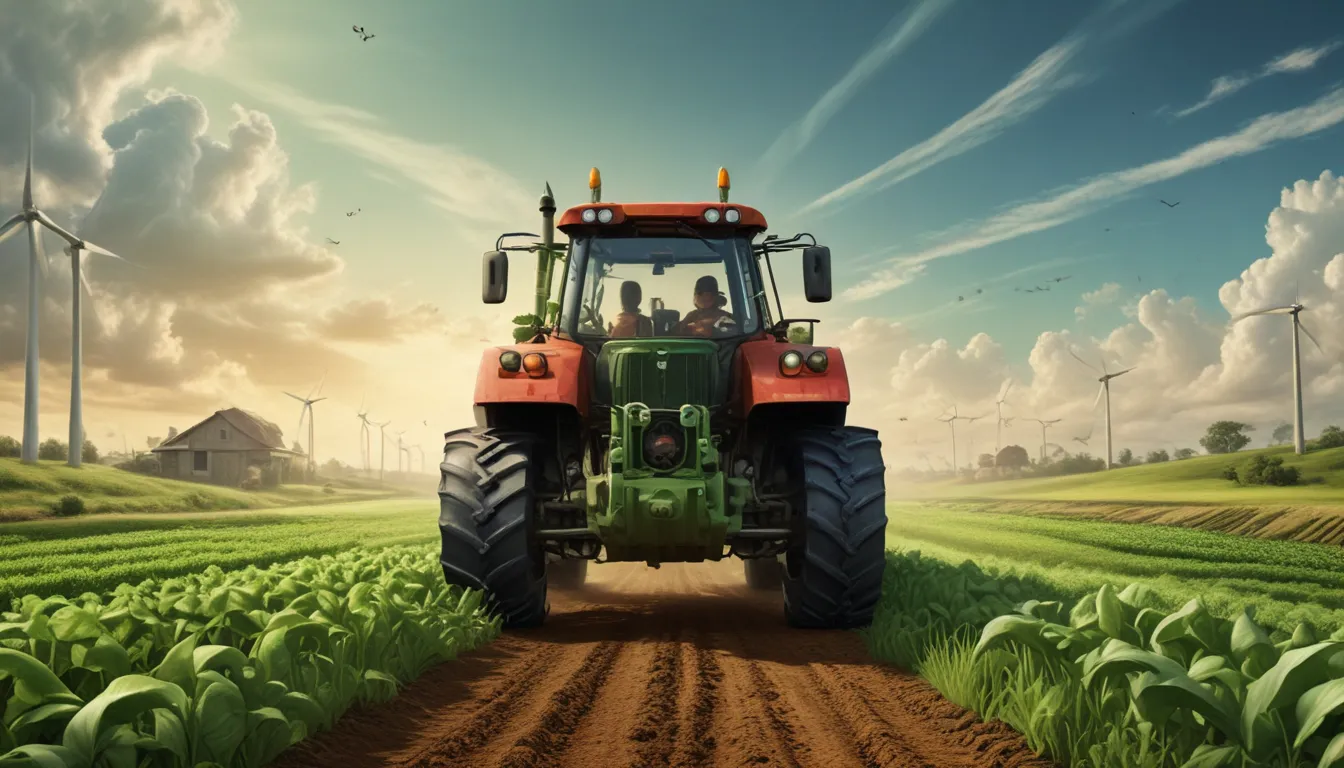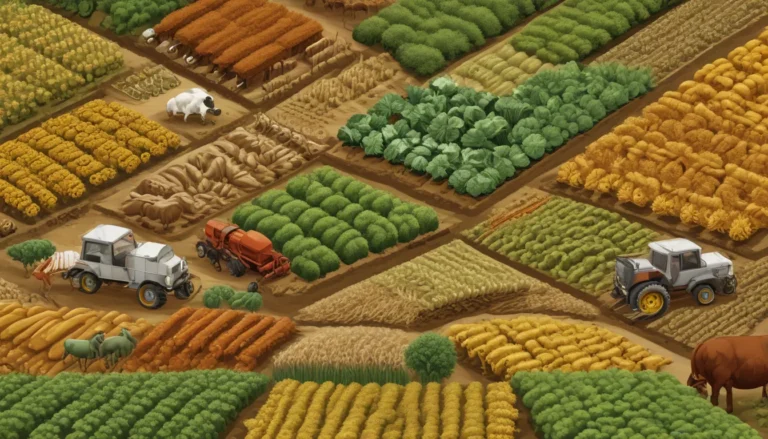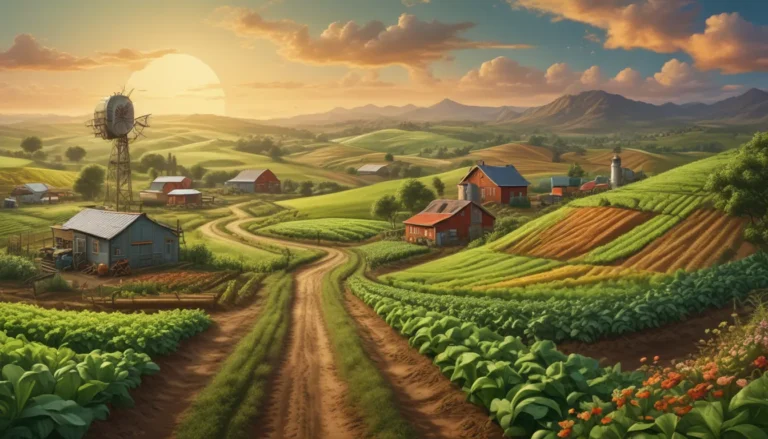A Note About Images: The images used in our articles are for illustration purposes only and may not exactly match the content. They are meant to engage readers, but the text should be relied upon for accurate information.
In the mid-20th century, the world witnessed a groundbreaking movement known as the Green Revolution. This period of significant technological advancements and scientific innovations aimed to revolutionize agriculture and address the looming threat of global food scarcity. Led by visionary figures like Norman Borlaug, the Green Revolution brought about remarkable changes in global food production, transforming barren lands into lush fields and significantly increasing crop yields. In this article, we will delve into the extraordinary facts about the Green Revolution, exploring its innovative breakthroughs, societal impacts, and ongoing debates surrounding this pivotal period in agricultural history.
Key Takeaways:
- The Green Revolution, spearheaded by Norman Borlaug, revolutionized agriculture by boosting crop yields and combating hunger while also sparking debates on environmental impact and small-scale farmers’ welfare.
- The Green Revolution’s innovations have shaped modern agriculture, setting the stage for biotechnology and sustainable practices, while igniting discussions on the safety and ethics of genetically modified organisms (GMOs).
The Green Revolution: A Paradigm Shift in Agricultural Practices
The Green Revolution marked a period of transformative change in agriculture between the 1940s and 1970s. It heralded a new era of increased agricultural productivity through the introduction of improved crop varieties, mechanization, and modern farming techniques that propelled the industry forward.
Norman Borlaug: The Visionary Pioneer of the Green Revolution
At the forefront of the Green Revolution stood Norman Borlaug, an American agronomist hailed as the father of modern agricultural practices. His groundbreaking research and development of high-yielding wheat varieties played a pivotal role in alleviating world hunger and revolutionizing agriculture globally.
The Remarkable Increase in Crop Yields
One of the crowning achievements of the Green Revolution was its ability to significantly boost crop production. By leveraging high-yield crop varieties, advanced irrigation methods, and synthetic fertilizers, farmers experienced unprecedented levels of productivity, ushering in a new era of abundance.
Fighting Hunger and Poverty Through Increased Food Production
The Green Revolution emerged as a powerful tool in the fight against food insecurity worldwide. By enhancing agricultural productivity, it played a key role in reducing hunger and poverty in developing nations, offering a sustainable solution to the global food crisis.
Embracing Chemical Inputs: A Double-Edged Sword
To maximize crop yields, farmers embraced the use of chemical fertilizers and pesticides during the Green Revolution. While these inputs drove up productivity, they also raised concerns about environmental sustainability and the long-term effects on soil health.
Environmental Impact of the Green Revolution
The widespread adoption of intensive farming practices during the Green Revolution had complex implications for the environment. While it met the rising demand for food, it also contributed to issues such as deforestation, water pollution, and biodiversity loss, underscoring the need for sustainable farming practices.
Addressing Inequities: Impact on Small-Scale Farmers
Critics of the Green Revolution highlight its disproportionate benefits for large-scale commercial farmers, often at the expense of small-scale producers. The shift towards mechanization and reliance on purchased inputs created disparities within the agricultural sector, raising questions about social equity.
Evolution of Genetically Modified Organisms (GMOs)
As part of the Green Revolution, scientists delved into genetic modification to develop crops with desirable traits like pest resistance. This journey led to the creation of genetically modified organisms (GMOs), sparking global debates on their safety and ethical considerations.
Shaping the Future of Agriculture
The legacy of the Green Revolution endures in modern agricultural practices. It laid the groundwork for advancements in biotechnology, precision farming, and sustainable agriculture, ensuring the continued progress of efficient and resilient food production systems.
Conclusion: A Sustainable Path Forward
In conclusion, the Green Revolution stands as a transformative force in agriculture, driving advancements in technology, food production, and sustainability. While it has made significant strides in enhancing crop yields, reducing hunger, and improving livelihoods globally, it has also faced scrutiny over its environmental impact and unequal distribution of benefits. By embracing technology, science, and sustainable farming methods, we can forge a path towards a more equitable and environmentally conscious future in agriculture.
FAQs
Q: What is the Green Revolution?
A: The Green Revolution was a period of revolutionary advancements in agriculture during the mid-20th century aimed at boosting crop yields and combating hunger through innovative technologies and practices.
Q: How did the Green Revolution impact food production?
A: The Green Revolution significantly increased food production by introducing high-yielding crop varieties, improved irrigation methods, and modern farming techniques, ensuring food security for millions worldwide.
Q: What are the criticisms of the Green Revolution?
A: The Green Revolution has faced criticism for its reliance on chemical inputs, environmental impacts, and unequal benefits distribution, particularly affecting small-scale farmers.
Q: Is the Green Revolution sustainable?
A: Ongoing debates surround the sustainability of the Green Revolution, with efforts underway to develop sustainable farming practices that balance productivity with environmental stewardship.
Q: Are there future prospects for the Green Revolution?
A: The legacy of the Green Revolution continues to inspire advancements in agriculture, driving research and innovation towards addressing present and future challenges in food security and sustainability.
Sparking Innovation, Nurturing Sustainability
The Green Revolution remains a beacon of progress in agriculture, driving innovation and paving the way for a sustainable future. By building upon its foundation of technological advancements and embracing holistic approaches to farming, we can navigate towards a more resilient, equitable, and environmentally conscious agricultural landscape. Join us on this journey of discovery and transformation as we cultivate a brighter future for food production and sustainability.






